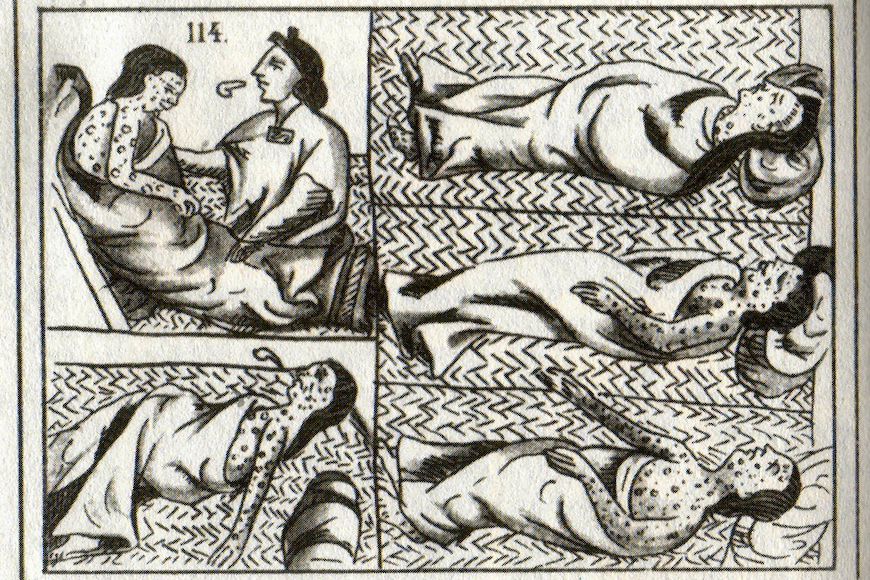COVID Through the Eyes of Historians: Sarah Chambers
In 1520, shortly after the arrival of Cortés and his men to Mexico, a smallpox epidemic broke out in the Aztec capital of Tenochtitlan. Indigenous residents of the city later recalled that devastating event and their words would resonate 500 years later with the loved ones of those struck by COVID-19: “The disease brought great desolation; many people died of it. They could no longer walk about, but lay in their dwellings and sleeping places, no longer able to move or stir. ... And when they made a motion, they called out loudly.”
The arrival of Europeans to the Americas beginning in 1492 triggered not just one but a series of epidemics across the continent over the course of centuries: measles, typhus, influenza, and pneumonic plague in addition to smallpox. At the time, both Europeans and Native Americans interpreted disease largely through the lens of religion. Some native Andeans feared they had lost favor with their deities, the wakas, and advocated a rejection of all contact with the Spaniards so that the wakas would instead visit illness upon the invaders. Catholic missionaries despaired at the widespread death and, believing it presaged the end of the world and return of Christ, redoubled their efforts at conversion before it was too late. Unfortunately, evangelization worked against what today we call “social distancing”: gathering native people into mission villages accelerated the spread of disease.
By the middle of the seventeenth century, the indigenous population of the areas colonized by Spaniards had declined to between five and ten percent of their numbers before contact. In some areas, like the Caribbean, entire groups disappeared along with their cultures and languages. But in other regions, native people slowly acquired immunities and survived. Communities throughout the continent that still speak indigenous languages and maintain their own traditions are a testament to that resilience.

These epidemics are a major topic of research and debate among historians. For an excellent and engaging exploration of this theme, I invite you to view an interactive StoryMap created by history major Lynn Walsh (BA '19) for the Early Latin America course in fall 2018. Be sure to click on points on the map for additional pop-up information.
Sarah C. Chambers has incorporated digital mapping into courses on Latin America, the Atlantic World, and women’s history. She has published widely on political culture, citizenship, law, and gender during Spanish America’s transition from colonialism to nationhood (c. 1780-1850), and is currently researching refugees and émigrés during the wars of independence.

